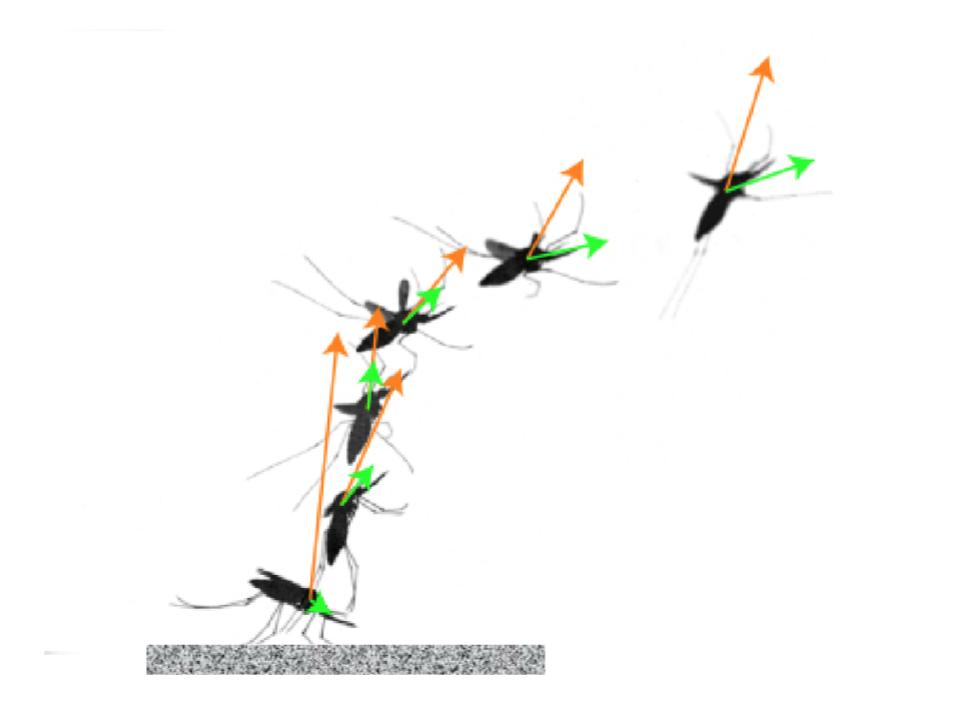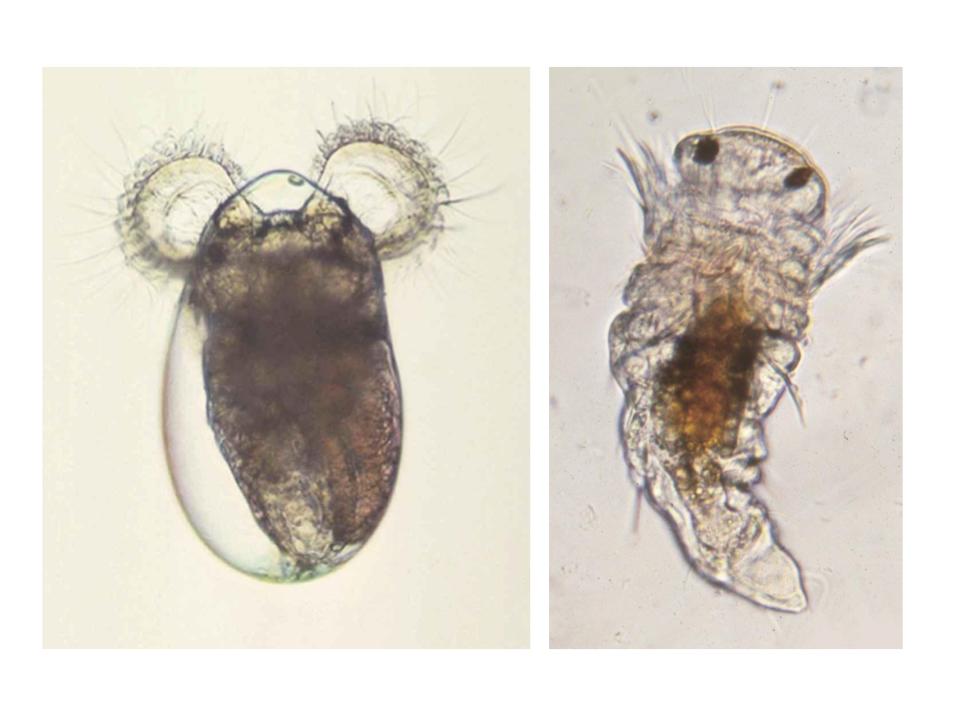Fluid dynamics of animals at intermediate Re

Reynolds number (Re) is the ratio of inertial forces to viscous forces for a given flow situation. The fluid dynamics of very small organisms that operate at viscous low Re, and of large organisms that operate at inertial high Re, are well-studied. In contrast, small animals like zooplankton and insects swim, fly, and run at intermediate Re's, where both inertial and viscous forces determine their hydrodynamic or aerodynamic performance. We have been studying the effects of morphology on hydrodynamic performance at intermediate Re, a topic that is still largely unexplored. We study this issue using field and lab measurements of organisms operating at intermediate Re, and we also manipulate morphology to determine effects on performance in experiments with dynamically-scaled physical models and with mathematical models. Topics we have been exploring in the intermediate Re range include hydrodynamic forces on tiny marine larvae on surfaces exposed to ambient water flow, aerodynamic forces on flying, gliding, and running insects, and the consequences of spines on zooplankton to their swimming and feeding performance.
Selected references on this topic

- Kingsolver, J. G. and M. A. R. Koehl (1985) Aerodynamics, thermoregulation, and the evolution of insect wings: Differential scaling and evolutionary change. Evolution 39: 488- 504.
- Full, R. J. and M. A. R. Koehl (1993) Drag and lift on running insects. J. Exp. Biol. 176: 89-101.
- Kingsolver, J. G. and M. A. R. Koehl (1994) Selective factors in the evolution of insect wings. Ann. Rev. of Entomol. 39: 425-451.
- Hadfield, M. G., A. Faucci, and M. A. R. Koehl. (2007) Measuring recruitment of minute larvae in a complex field environment: The corallivorous nudibranch Phestilla sibogae (Bergh). J. Exp. Mar. Biol. Ecol. 338: 57-72. doi:10.1016/j.jembe.2006.06.034
- Koehl, M. A. R., J. P. Crimaldi, and D. E. Dombroski (2013) Wind chop and ship wakes determine hydrodynamic stresses on larvae settling on different microhabitats in fouling communities. Mar. Ecol. Prog. Ser. 479: 47–62.
- Munk, Y., Yanoviak, S. P., Koehl, M. A. R., and Dudley, R. (2015) The descent of ant: field-measured performance of gliding ants. Journal of Experimental Biology 218: 1393- 1401. doi: 10.1242/jeb.106914
- Pepper, R. J. S. Jaffe, E. Variano, and M. A. R. Koehl (2015) Zooplankton in flowing water near benthic communities encounter rapidly fluctuating velocity gradients and accelerations. Marine Biology 162: 1939-1954.
- Koehl, M. A. R. and Cooper, T. (2015) Swimming in an unsteady world. Integr. Comp. Biology 55: 683-697. doi:10.1093/icb/icv092
- Muijres, F.T., S.W. Chang, W.G. vanVeen, J. Spitzen, B.T. Biemans, M. A. R. Koehl, R. Dudley (2017) Escaping blood-fed malaria mosquitoes minimize tactile detection without compromising on take-off speed. J. Exp. Biol. 220: 3751-3762. doi:10.1242/jeb.163402
- Koehl, M. A. R., E. Perotti, D. Sischo, T. Hata, M.G. Hadfield (2022) Effects of currents, waves, and biofilms on motion and surface contacts of tubeworm larvae swimming above or below surfaces. Marine Ecology Progress Series 686: 107–126. doi.org/10.3354/meps14001.
-
 Micrographs of the larva of a sea slug and the larva of a marine tube worm
Micrographs of the larva of a sea slug and the larva of a marine tube worm
